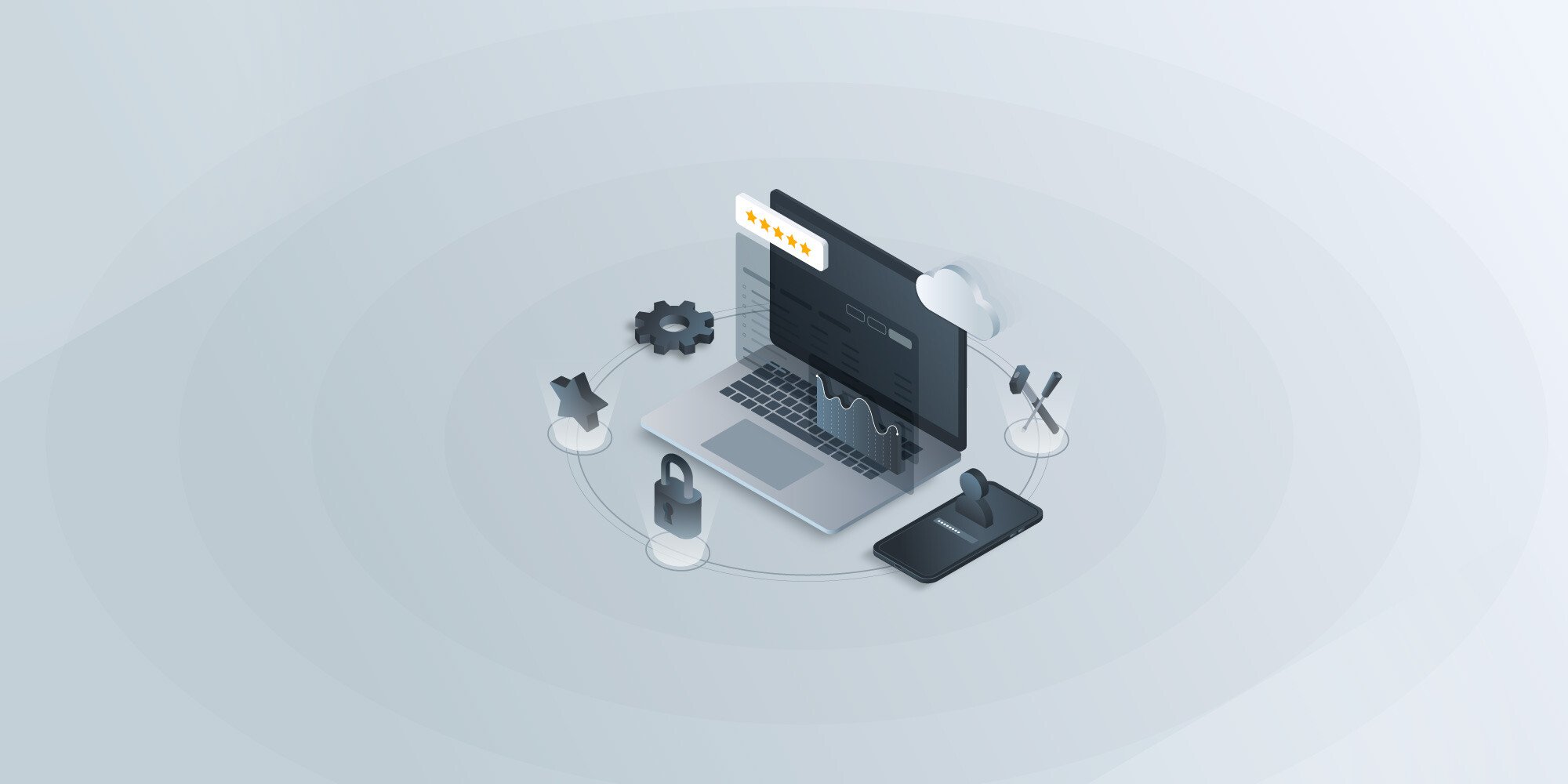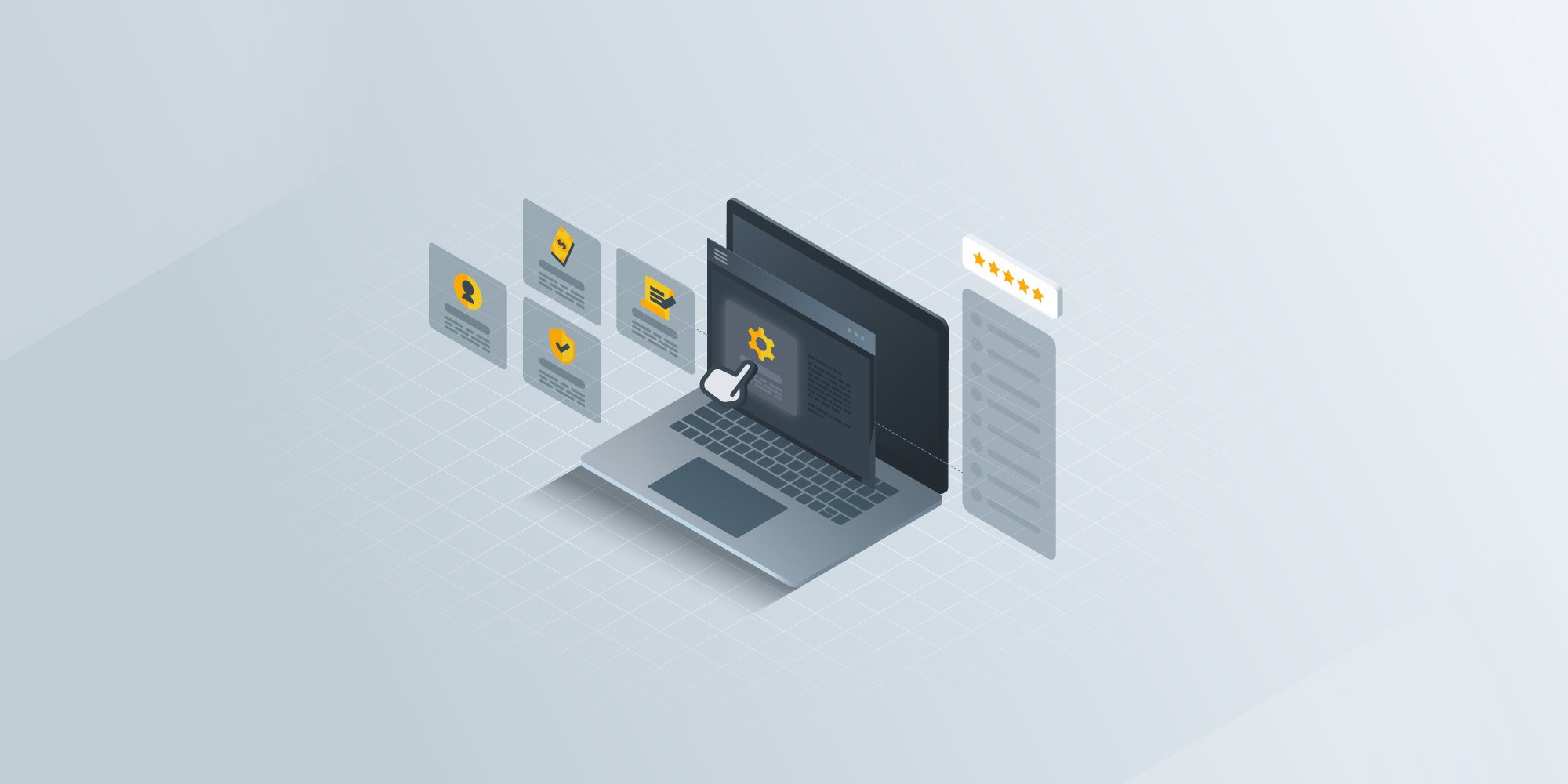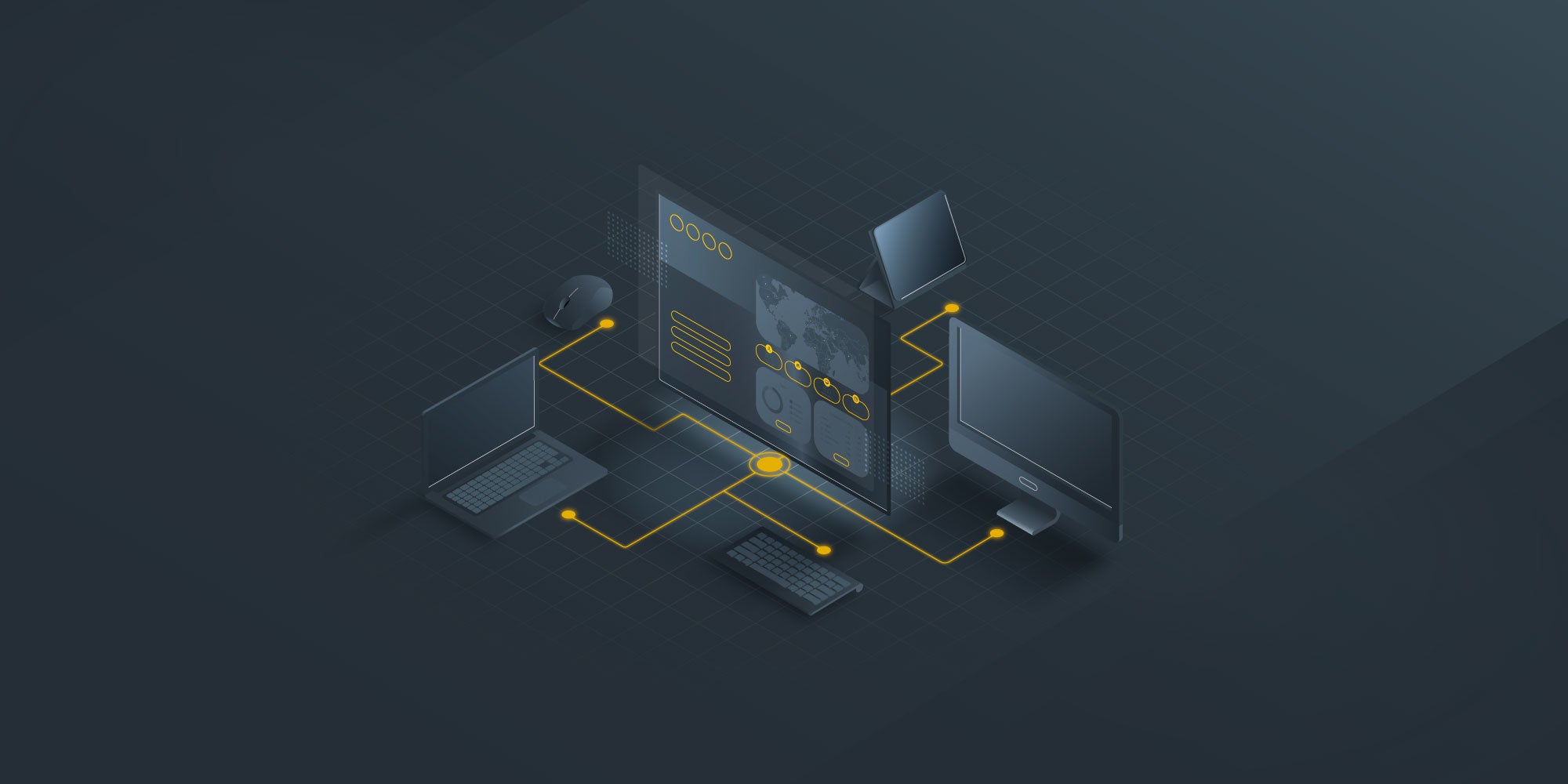RMM vs MDM: Understanding the key differences and benefits
 GroWrk Team
GroWrk Team
As remote work and mobile-first operations become the norm, businesses are rethinking how they manage devices and infrastructure. Two solutions lead the way: Remote Monitoring and Management (RMM) and Mobile Device Management (MDM). Both tools improve visibility and control, but they serve different functions. Understanding how they work can help IT leaders choose the right approach for securing assets and supporting users across any location.
Key takeaways
-
RMM manages IT infrastructure like servers, desktops, and networks, offering real-time monitoring, remote access, and patch automation for proactive maintenance.
-
MDM manages mobile devices such as smartphones and laptops, with features like device enrollment, remote wipe, and security policy enforcement to ensure compliance.
-
Both RMM and MDM can be cloud-based, providing scalable, cost-effective, and flexible solutions for managing remote teams and hybrid environments.
What is RMM and MDM?
.png?width=600&height=300&name=MDM%20features%20(9).png)
Remote Monitoring and Management is a solution typically used by IT teams and managed service providers to monitor and maintain the health of an organization’s IT infrastructure. It provides tools to track performance, automate updates, resolve issues remotely, and improve system uptime across servers, networks, and endpoints.
By contrast, Mobile Device Management focuses on smartphones, tablets, and laptops. IT teams can enroll, configure, and secure mobile devices, which is especially important in bring-your-own-device (BYOD) environments. MDM software enforces corporate policies, encrypts data, and can lock or wipe lost or stolen devices.
What are the core features of RMM?
RMM tools give IT teams visibility and control over an organization’s entire IT environment—from servers to endpoints. They help prevent issues before they impact users and automate routine tasks to save time. Key features include:
-
Real-time monitoring: Constant surveillance of system health, CPU usage, disk space, and network activity across all devices.
-
Automated alerts: Instant notifications when performance dips, devices go offline, or anomalies are detected, allowing fast intervention.
-
Patch management: Automatic deployment of security patches and software updates to keep systems secure and up to date.
-
Remote access and troubleshooting: IT admins can log into devices remotely to diagnose and fix problems without disrupting users.
-
IT asset inventory: Centralized tracking of hardware and software assets to monitor usage, detect vulnerabilities, and stay compliant.
-
Scripting and automation: Execute multiple-device scripts to automate maintenance tasks like disk cleanup, reboots, or software installations.
-
Reporting and analytics: Dashboards and reports on system uptime, compliance, and performance trends to guide IT decisions.
MDM solutions help organizations manage and secure mobile devices like smartphones, tablets, and laptops. These tools ensure devices stay compliant, protected, and optimized for productivity. Core features include:
-
Device enrollment: This process automates registering new devices into the organization’s management system for fast, consistent setup and deployment.
-
Security policy enforcement: Enforces company policies across all devices, such as passcode requirements, encryption, and screen lock settings, to ensure compliance.
-
Application management: Enables IT to push, update, or remove apps across devices, ensuring users have the right tools while restricting unapproved software.
-
Remote wipe and lock: This feature allows admins to lock or erase a lost or stolen device remotely, protecting sensitive corporate data.
-
Compliance monitoring: Tracks device health, configuration, and usage to identify and address real-time non-compliance.
-
Geofencing and location tracking: These monitor device location and apply rules based on geography, like restricting app access outside designated areas.
-
User-based access control: This system assigns permissions based on roles so users can only access data and apps relevant to their job function.
-
Integration with identity providers: Works with SSO and directory services (like Azure AD or Okta) to streamline authentication and access management.
Comparing RMM and MDM

Both RMM and MDM play important roles in IT management, but they serve distinct purposes based on what they manage and how they secure devices.
Scope of management
RMM is designed to handle the full breadth of IT infrastructure—servers, workstations, desktops, and networks. It’s a better fit for organizations with complex environments that require oversight of every endpoint, not just mobile devices. MDM, by contrast, focuses specifically on managing mobile devices like smartphones, tablets, and laptops, ensuring they comply with organizational policies and security standards.
Security capabilities
The security features in each solution reflect their area of focus. RMM secures infrastructure with tools like real-time network monitoring, automated patching, and alert systems to detect threats before they escalate. MDM secures mobile endpoints through app blacklisting, encryption, remote wipe capabilities, and user-based access controls to protect corporate data in case of loss, theft, or misuse.
Device enrollment and provisioning
MDM automates enrolling and configuring mobile devices to ensure immediate compliance and usability. It streamlines tasks like pushing apps and security policies at scale. RMM also supports streamlined provisioning, helping IT teams deploy and manage infrastructure devices with consistent configuration and monitoring.
A brief summary table for RMM vs MDM
|
Feature/Aspect |
RMM (Remote Monitoring & Management) |
MDM (Mobile Device Management) |
|---|---|---|
|
Primary focus |
IT infrastructure (servers, workstations, networks) |
Mobile devices (smartphones, tablets, laptops) |
|
Scope of management |
Broad—entire IT environment |
Targeted—mobile device compliance and security |
|
Security capabilities |
Patch management, network monitoring, and real-time threat alerts |
Remote wipe, encryption, malware detection, app blacklisting |
|
Device enrollment |
Applies to endpoints across the network |
Automated enrollment for mobile devices |
|
Provisioning |
System-level provisioning and ongoing system health monitoring |
App deployment, device setup, and policy configuration |
|
Best for |
Businesses managing large IT infrastructures or offering MSP services |
Organizations with mobile workforces or BYOD policies |
|
Deployment |
Often used by MSPs, cloud, or on-prem options |
Cloud-based SaaS or on-prem deployments |
|
Complementary use |
Works well when integrated with MDM in a UEM setup |
Part of a broader Unified Endpoint Management (UEM) strategy |
Benefits of using RMM
.png?width=600&height=300&name=it%20equipment%20disposal%20(2).png)
Remote Monitoring and Management tools allow IT teams to proactively manage infrastructure, reduce downtime, and automate routine tasks. These benefits improve operational efficiency and lower costs, especially for businesses with complex or distributed environments.
- Proactive monitoring and maintenance: RMM continuously monitors endpoints, servers, and networks for issues, often identifying and resolving problems before users know them. This prevents outages and minimizes downtime.
- Automated patch management: Security patches and software updates are deployed automatically, reducing manual workload and ensuring systems are updated with the latest protections.
- Remote access and troubleshooting: IT teams can access and fix devices remotely without disrupting users. This is essential for supporting remote workforces and distributed environments.
- Improved cybersecurity: RMM tools help detect and respond to threats quickly by monitoring unusual activity, triggering real-time alerts, and enforcing security policies.
- Resource optimization: With automation and centralized control, RMM reduces the need for on-site IT intervention and allows teams to focus on higher-level strategic projects.
- Scalability and efficiency: RMM platforms grow with your business, offering consistent device and network management whether you’re supporting 10 or 10,000 endpoints.
Benefits of implementing MDM
.png?width=600&height=300&name=MDM%20features%20(8).png)
Mobile Device Management gives organizations the tools to secure, monitor, and manage mobile devices used by employees. It’s essential for protecting sensitive data, maintaining compliance, and supporting a mobile or hybrid workforce.
- Stronger mobile security: MDM enforces encryption, passcodes, and restrictions on app usage. It also enables remote lock and wipe in case of loss or theft, reducing the risk of data breaches.
- Simplified device onboarding: New devices can be enrolled, configured, and made policy-compliant automatically, speeding up setup for new hires or device replacements.
- Support for BYOD policies: With MDM, companies can allow personal device use without compromising security. Corporate data stays separate and protected, while personal privacy is maintained.
- Centralized policy enforcement: IT teams can manage security policies from a single platform, ensuring consistent standards across all mobile devices.
- Improved compliance: MDM helps businesses meet data protection regulations by providing audit trails, usage reports, and automatic enforcement of compliance protocols.
- Operational efficiency: Routine tasks like updates, software installs, and app permissions are handled remotely, reducing IT workload and improving the end-user experience.
Unified Endpoint Management (UEM)
Unified Endpoint Management (UEM) combines the capabilities of RMM and MDM into a single platform for managing all endpoints—laptops, desktops, smartphones, tablets, and more—from one centralized system.
- All-in-one visibility: UEM gives IT teams a comprehensive view of every device connected to the corporate environment. All devices, whether servers, mobile phones, or desktops, are tracked and managed from one interface.
- Streamlined security and compliance: UEM helps organizations maintain consistent security standards across their device fleet with unified policy enforcement. It ensures compliance with GDPR, HIPAA, or ISO regulations by automating updates, encrypting data, and managing access permissions.
- Faster response to threats: UEM allows real-time monitoring of endpoints for unusual activity and potential vulnerabilities. IT teams can respond quickly with automated actions like patch deployment, app removal, or remote lock/wipe.
- Improved user experience: By supporting a wide range of operating systems and device types, UEM lets employees use their preferred devices while giving IT complete control. This flexibility promotes hybrid work, BYOD programs, and remote onboarding.
- Lower total cost of ownership: Managing devices from one platform reduces tool sprawl, minimizes IT workload, and improves operational efficiency. With fewer platforms to manage and better automation, businesses save time and money while enhancing security.
RMM vs MDM? Choosing the right solution for your business
Choosing between RMM and MDM depends on your IT environment and device mix.
Use RMM to manage infrastructure like servers, workstations, and networks. It’s ideal for proactive system monitoring, patching, and keeping IT environments stable and secure.
Go with MDM if you focus on securing mobile devices, especially in remote or BYOD setups. It ensures mobile compliance, data protection, and app management for devices outside your network.
Many businesses benefit from both, especially when combined in a Unified Endpoint Management platform.
Key factors to consider:
-
What are you managing? RMM = infrastructure. MDM = mobile devices.
-
How mobile is your workforce? More mobility means a greater need for MDM.
-
Do you need centralized control? Combining both provides complete endpoint visibility.
-
How critical is compliance? MDM enforces mobile security; RMM covers broader systems.
Integrating RMM and MDM
.png?width=600&height=300&name=MDM%20features%20(6).png)
Combining RMM and MDM into a unified solution, often through a UEM platform, gives IT teams full visibility and control across all devices, from servers to smartphones.
Why integration matters:
-
Centralized management: One dashboard to monitor, update, and secure all endpoints—mobile and fixed.
-
Faster threat response: Real-time alerts and automated actions across all device types.
-
Consistent policies: Apply uniform security and compliance rules across mobile and infrastructure assets.
-
Simplified workflows: Reduce IT overhead by consolidating tools and automating tasks like enrollment, patching, and compliance checks.
By integrating RMM and MDM, businesses can streamline operations, reduce risk, and ensure that every device is accounted for and protected, no matter where or what it is.
Use cases for RMM and MDM
RMM and MDM are essential for managing remote teams and BYOD environments. RMM automates updates and maintenance to reduce downtime and boost efficiency. At the same time, MDM ensures mobile devices stay secure and operational through remote diagnostics and patching—even when devices are off-site.
Effective device management is critical, as mobile devices are increasingly involved in business operations. Leveraging RMM, MDM, and related tools allows organizations to secure their IT environment and support scalable, efficient growth.
Summary table: Use cases for RMM and MDM
|
Use Case Aspect |
RMM (Remote Monitoring & Management) |
MDM (Mobile Device Management) |
|---|---|---|
|
Remote management |
Automates software updates and maintenance tasks |
Remotely lock or wipe devices to maintain security |
|
Operational efficiency |
Reduces downtime by proactively addressing IT issues |
Streamlines device management processes |
|
Device diagnostics |
Provides insights into network and device performance |
Identifies and resolves mobile device malfunctions remotely |
|
Security |
Enhances cybersecurity through continuous monitoring |
Protects sensitive data on mobile devices |
|
BYOD support |
Facilitates secure access to corporate networks |
Controls personal devices used by employees |
|
Business growth |
Supports smooth business operations through IT optimization |
Enables secure mobile access to boost productivity |
|
Remote devices |
N/A |
Manages and secures devices even when they are not physically present in the office |
This table outlines the specific use cases where RMM and MDM provide critical benefits, helping businesses optimize their IT management and enhance security.
Why companies choose GroWrk for device management beyond RMM and MDM
While RMM and MDM each solve a piece of the IT management puzzle, GroWrk delivers full end-to-end control of the entire device lifecycle—including procurement, provisioning, recovery, and disposal—across 150+ countries.
Here’s how GroWrk complements and enhances RMM and MDM:
-
Hardware + software coverage
RMM and MDM manage what’s on the device, while GroWrk manages the device itself, from sourcing and shipping to end-of-life handling. -
Global device logistics
Provision laptops locally, track assets globally, and retrieve hardware during offboarding—without relying on slow international shipping or scattered vendors. -
Zero-touch deployment support
Devices arrive pre-configured with your RMM/MDM stack installed so users can work on day one with full compliance and security. -
Real-time asset visibility
Monitor physical asset status and location from your dashboard to track digital health, helping IT and Ops stay in sync. -
Automated recovery and recycling
GroWrk handles secure retrieval, certified data wiping, and ESG-compliant recycling or reuse when a device is no longer used. -
Seamless integrations
It works alongside your existing RMM and MDM tools to create a unified endpoint management ecosystem, with centralized reporting, alerts, and inventory tracking.
Frequently asked questions
What does Mobile Device Management (MDM) allow IT administrators to do?
Mobile Device Management allows IT administrators to monitor, configure, and secure mobile devices within the organization, including phones, tablets, and laptops. This is essential for device integrity and data security.
What is one key feature of MDM?
One key feature of MDM is device enrollment, which simplifies adding new devices to the company network. This improves efficiency and ensures all devices are managed consistently.
How does MDM improve business security?
MDM improves business security by enforcing strong security policies and incorporating features like remote wipe, encryption, and two-factor authentication. This comprehensive approach secures sensitive data from threats.
What is the primary purpose of Remote Monitoring and Management (RMM)?
Remote Monitoring and Management (RMM) aims to ensure maximum performance and prevent issues by monitoring and managing IT infrastructures, including servers, workstations, and networks. This is a proactive approach to overall efficiency.
What are some benefits of using RMM?
RMM benefits operational efficiency by managing networks and resolving issues before they impact processes. It also saves time and resources through remote task execution and regular IT system maintenance.







